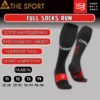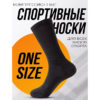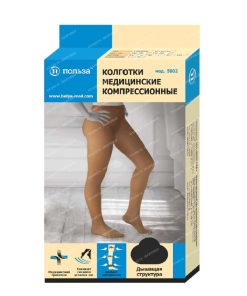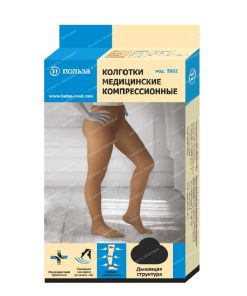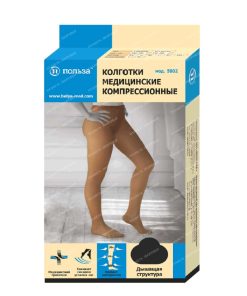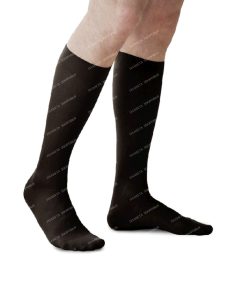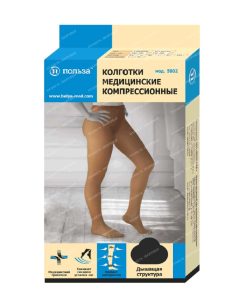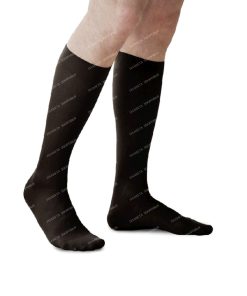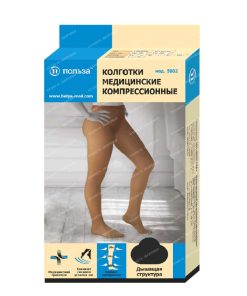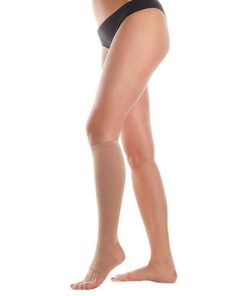Title: Beige Compression Socks, Class 2 (23-32 mmHg) – Almed Medical Grade
English Description:
Almed beige compression socks offer medical-grade compression (Class 2, 23-32 mmHg) with an open toe design. These elastic compression stockings are designed for the treatment and prevention of venous thromboembolic complications, both pre- and post-operatively (following internal organ surgery). They are also indicated for the prevention and treatment of venous diseases, post-thrombotic syndrome, lymphedema, and the prevention of post-operative complications after sclerotherapy and phlebectomy. Recommended for post-operative and post-partum recovery, as well as for various ambulatory and inpatient surgical procedures.
Indications:
- Prevention of venous disease
- Treatment of venous disorders
- Prevention of varicose veins during pregnancy
- Reduction of edema (swelling)
- Lymphedema and lipoedema (swelling of lymphatic and fatty tissues)
- Restless legs syndrome
- Reticular (net-like) varicose veins, telangiectasias
- Functional phlebopathies
- Prevention of deep vein thrombosis (DVT)
- Thrombosis of the lower extremities, and post-thrombosis recovery
- Excessive strain on the lower extremities
- Post-surgical compression therapy (following venous surgery – wear for three months)
- Compression therapy after phlebosclerotization and venous surgery
Consult a healthcare professional before use.
Application Instructions:
These socks can be used in medical facilities and at home. Size should be determined by measurement (using a non-restrictive measuring tape) according to the size chart. Apply directly to the skin. Before application, ensure hand hygiene (or wear gloves) and remove jewelry that could damage the skin or the socks. Apply in the morning and remove in the evening, unless otherwise advised by a doctor. Discontinue use and consult a healthcare professional if discomfort occurs.
How to Put On:
By Hand:
- Hold the sock with the front facing outwards.
- Insert your hand to the heel, grasping the heel from the inside.
- Turn the sock inside out to the heel only, smoothing it to create a funnel shape.
- Turn the heel towards you.
- Insert two thumbs inside the inverted sock, stretching it wide and pulling it up to the mid-foot.
- Pull up on the heel area, aligning it with your heel and securing it in place.
- Grasp approximately 3-5 cm of the sock.
- Stretch the heel area onto your heel.
- In sections (approximately 5 cm at a time), grasp and stretch the sock, smoothing it onto your leg until fully applied.
- Gently smooth the sock to remove wrinkles.
Using a Sock Aid:
A sock aid assists in application for elderly, immobile, or weakened patients. Instructions for use are included on the product packaging [Note: instructions should be added if available].
How to Remove:
- Grasp the top of the sock and gently roll it down to the knee, then to the ankle and toe.
- Avoid pulling on the elastic band; instead, grasp the knitted fabric.
Important Notes:
- If the sock feels too tight, do not pull it up further; instead, lower it and reapply in sections, stretching more firmly.
- Gloves are recommended during application.
- Avoid applying creams or ointments to the area where the silicone band adheres (if applicable).
- Do not cut loose threads or labels to prevent unraveling.
Construction:
Breathable, moisture-wicking, antibacterial material with optimal compression properties. Features a specialized knitting technique for different body parts, ensuring optimal pressure distribution. The edges are soft and will not dig into the skin. Open toe design. Uses Class “A” complex yarns with double S-shaped braiding in opposing directions for increased durability. Meets Class 2 compression standards (23-32 mmHg). Available in black and beige. Unisex.
Material Composition:
Nylon 70%, Spandex 30%
Packaging:
1 pair
Related products
Compression stockings
Medical compression stockings below the knee with a toe m.3002 2 class. R.5 (XL) height1 black
Compression stockings
Stockings medical compression below a knee 1 kl.k. with toe m.3002 r.4 (L) height2 black
 Free worldwide shipping on orders $99+
Free worldwide shipping on orders $99+  US: temporary delays — postal services aligning new import rules,
US: temporary delays — postal services aligning new import rules,  EU: 1–2 weeks,
EU: 1–2 weeks,  Worldwide: 1–4 weeks
Worldwide: 1–4 weeks 

